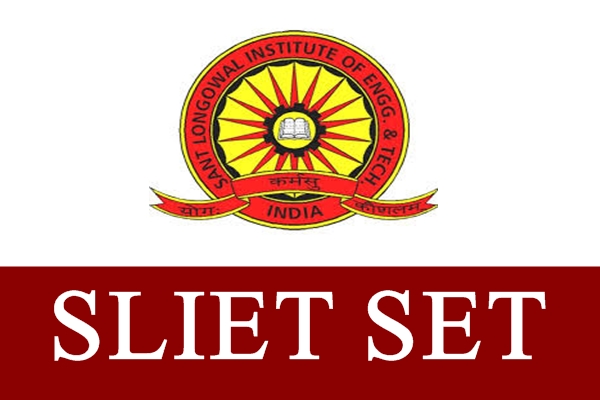



|
Tweet
Pin
It
|
| SET I | SET II | SET III | SET VI |
For admission to Certificate Programme
(i) English, General Knowledge, Mental Aptitude
(ii) Mathematics
Algebra : Integers, rational and irrational numbers, ratio and proportions. Polynomials, GCD and LCM of Polynomials by factorization method. Linear equations in one variable; solution of simultaneous equations. Quadratic equations and their solutions. Law of indices.
Trigonometry : Trigonometric ratios-sin x, cos x, tan x, cot x, cosec x and sec x for 0o , 30o, 45o , 60o and 90o . Trigonometric Identities. Use of Trigonometric tables. Simple problems on heights and distances.
Mensuration : Perimeter and area of a triangle, square, rectangle, rhombus, trapezium, quadrilateral and circle. Volume and surface area of cube, right prism, cylinder, cone and sphere.
Geometry : Point, line, collinear points, intersecting and non-intersecting lines in a plane. Family of lines, concurrent lines, distance between two parallel lines. Angle-acute, obtuse and right angles. Triangle, its sides and angles. Similarity of triangles. Congurence of triangles. Pythagoras theorem and its converse. Circle. Diameter and circumference of a circle. Arc and sector of a circle. Chord and segment of a circle. Tangent to a circle. Family of concentric circles. Direct and transverse common tangents. Centroid, and orthocentre.
Statistics : Collection and tabulation of statistical data. Graphical representation of statistical data, Bar diagram, histograms, pie-charts. Measures of central tendency (Mean, median, mode).
(i) Physics
Motion : Uniform and non-uniform motion (qualitative idea only), displacement, speed and velocity, acceleration, equations of motion.
Force : Definition, Inertia of a body, balanced and unbalanced forces, acceleration, relationship between force, acceleration and mass of an object, action and reaction of forces.
Gravitation : Laws of gravitation, acceleration due to gravity.
Work : Work done by a force, relation between work and energy, kinetic energy and potential energy.
Wave Motion : Nature of wave, propagation of a wave through a medium, type of waves; longitudinal, transverse, simple harmonic motion (graphical representation), amplitude of wave, relationship between wave length, frequency and velocity of wave.
Light : Perception of energy carried by light waves, human eye structure and function of human eye, focal length of eye-lens, image formation on the retina, perception of colour-composition of white light.
Heat : Mechanical work and heat, heat and temperature, measurement of temperature, specific heat, thermal expansion, change of state, idea of latent heat, idea about relative humidity.
Electricity : Conductors and resistors, measurement of current, potential difference and resistance. Heating effect of electric current, quantitative relationship between heat, current, resistance and time of flow of current, electric appliances based on heating effect of current, measurement of electric energy, units of electric power and energy.
Magnetic effects of Electric Current : Magnetic field of a current carrying conductor, coil and solenoid, electric motor & its applications, Electromagnetic induction.
(ii) Chemistry
Matter-Nature and Behaviour : Nature and behaviour of different types of substances, elements, compounds and their mixtures, structure of matter, atomic theory, molecules and atom; Structure of atom-electrons, protons and neutrons; composition of nucleus-atomic number and mass number, distribution of electrons in different energy levels in an atom, valence electrons and valency.
Atomic Mass and Molecular Mass: Mole concept; percentage composition of compounds.
Physical and Chemical Changes: Combination, displacement, decomposition, slow, fast, exothermic and endothermic reactions, catalyst; chemical equations.
Electrochemical Cell: Construction and working of a simple voltaic cell; lead storage battery and dry cell; electrolysis-movement of ions during electrolysis; Faraday's Laws; electroplating.
Classification of Elements: Periodic Law, periods & groups; General trend in properties of elements in periodic table.
Fuel : Type of fuels, coal; natural fuels, conditions for combustion, heat produced during combustion, combustion of food in living organisms.
Mineral Cycles : Carbon cycle, role of carbon and its compounds, nitrogen cycle, nitrogen fixation, oxygen cycle, oxidation process, water cycle, role of energy in different cycles. Water : Water a natural resource, origin of life in it, a medium for the activity of the living, a solvent, uses, saturated and unsaturated solution, sea water as habitat of organism, salts from sea.
Air : Composition, Atmosphere & its role on radiation, Carbon dioxide and its diverse effects on living organism, role of trees, release of carbon dioxide from fossils, fuels and automobiles, corrosion of metals, damage of historical monuments from acidic gases, effect of metallic particles, asbestos, etc., on living organisms. Carbon monoxide and its ill effects, air pollution and its effects on human beings.
Dependence of Man on Natural Resources : Minerals from earth, metals and non-metals, uses of non-metals.
Carbon and its Compounds : Introduction, allotropes of carbon and their occurrence, structure, related properties and uses; hydrocarbons their elementary structure, properties and uses; isomerism (elementary idea); simple compounds of carbon, hydrogen and oxygen and their uses; petroleum products; introductory account of synthetic fibres, plastics, rubber, soaps and detergents.
Extraction of Metals : Metals and non-metals (Si, P,S) occurrence, properties and uses; general metallurgical operations for extraction of pure metal (extraction of copper, iron and aluminum). Properties of metals, uses of metals and non-metals; properties of some alloys (brass, gunmetal, German silver, Solder, bronze) uses at home and in industry.
Find it Useful ? Help Others by Sharing Online
Comments and Discussions |
Related
Entrance Exams
|
|||
|
|